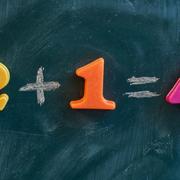Using your nonprofit’s endowment to navigate financial obstacles
Even not-for-profits that make realistic budgets and hold adequate funds in reserve to cover shortfalls can run into financial emergencies — particularly if they lose a major funding source. But if your organization has an endowment, its income may be able to help ease cash-flow issues, even long-term ones.
Restrictions and guidance
Several factors determine whether you’ll be able to cover budget shortfalls with your endowment. These include investment performance, inflation and your endowment’s spending policy. First and foremost, you can’t spend income from restricted funds for just any purpose. So make sure the endowment funds you’re looking at are “self-generated” or unrestricted.
In addition, your endowment’s spending policy must conform to provisions of the Uniform Prudent Management of Institutional Funds Act of 2006 (UPMIFA), if enacted by your state (most but not all states have enacted it). UPMIFA provides guidance about making prudent investment decisions and delegating investment management. For example, your nonprofit shouldn’t spend more than 7% of its endowment in any one year. In general, the portion you can spend includes investment appreciation, realized gains, interest and dividends.
Spending policy
Your endowment spending policy should define how much of the fund’s income can be spent on operations each year. It doesn’t, however, have to define how that money can be spent within operations.
For most nonprofits, spendable resources are defined as a percentage of a rolling average of their endowment investments (typically averaged over three to five years). This method helps even out the volatility of investment returns and prevents the endowment’s contribution to any one budget year from being significantly lower than contributions to other years. In most cases, the spendable percentage is between 4% and 7% — less when investment markets are depressed.
This approach may help smooth cash flow currently available to operations, but it doesn’t address whether the endowment fund will be able to maintain a similar level of funding for future operations. Also, because investment returns usually don’t correspond to the inflation rates that affect your operating budget, your spending policy should be based on more than recent returns.
Effect of inflation
To factor inflation into your endowment spending policy, you may wish to start with a relatively conservative, inflation-free investment rate of return. Then adjust it for inflation to arrive at a spending rate you can apply on a year-by-year basis. For example, if you determine that an inflation-free rate of return should be 3%, and the inflation rate appropriate to your sector is 2.5%, your effective spending rate to apply to your asset base would be 5.5% for that year.
It’s also important to keep a spending rate policy that isn’t directly linked to fluctuating investment rates of return. In other words, don’t allow your withdrawals from your endowment to go up just because investment growth on those funds has spiked.
Be reasonable
A reasonable endowment spending policy should preserve your principal and enable it to grow and produce income years into the future. If it doesn’t, you’re probably spending too much and need to adjust your policy. You may also need to find other funding sources to meet current operational needs. Contact us for help with your financial analysis.
© 2025












